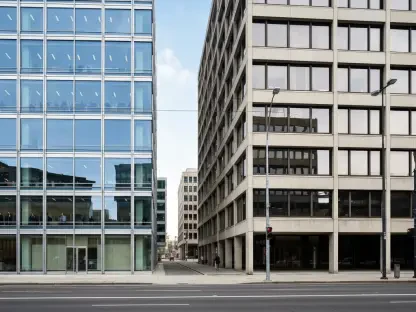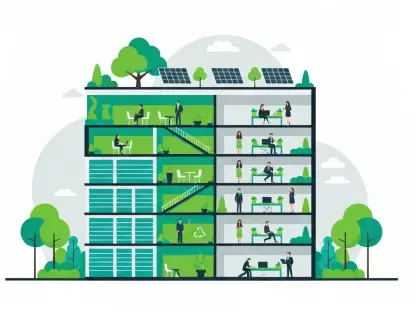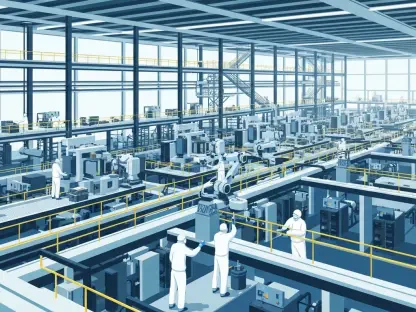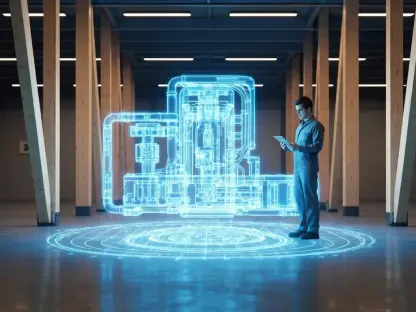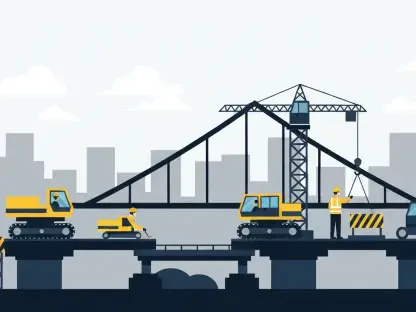Architecture has long been known for its conservative approach toward technological advancements. After the significant adoption of CAD technology in the early 1990s, the industry remained relatively stagnant in terms of embracing new tools. However, a wave of innovation by Proptech companies is beginning to change this narrative. These firms are developing digital tools aimed at enhancing efficiency, streamlining construction timelines, and addressing specific needs within the architecture and construction lifecycle. This article delves into how Proptech firms are driving this technological change and the challenges they face in modernizing a traditionally resistant field.
The Evolution of CAD Technology in Architecture
Initial Adoption and Impact
The early 1990s marked a substantial leap forward for architects with the introduction of computer-aided design (CAD) programs like AutoCAD. These tools revolutionized the drafting process, making it faster and more precise. Architects could now create detailed plans in a fraction of the time it took using manual methods. The initial enthusiasm for CAD programs led to widespread adoption across the industry. The introduction of CAD software fundamentally changed the way architectural designs were conceived and executed, reducing the time required to produce intricate plans and increasing accuracy significantly.
Despite these early advancements, architecture’s integration of new technology slowed considerably after the introduction of CAD. Many firms became reliant on these established tools and saw little incentive to explore new innovations. The business models adopted by architectural firms, which tied compensation to hours worked and iterations completed, further discouraged the adoption of more efficient technologies. As a result, the industry found itself in a technological limbo where the capabilities of contemporary digital tools went largely unexplored. This period of stagnation highlighted the inherent resistance within the field to shift away from familiar, time-tested practices towards newer, potentially disruptive technologies.
The Stagnation Period
Following the initial adoption of CAD technology, the architecture industry entered a period of technological stagnation. The business models that tied compensation to the number of hours worked and iterations created disincentives for further technological adoption. The efficiency gains promised by new digital tools were often ignored, as traditional practices and resistance to change dominated the field. Architectural firms were comfortable with their established processes, which provided a predictable workflow even if it was less efficient than what newer technologies could offer.
During this period, the industry’s focus remained on refining existing CAD tools rather than exploring innovative directions. Improvements to CAD software were largely incremental, aimed at enhancing functionalities rather than revolutionizing workflows. Meanwhile, other sectors like construction and real estate began experimenting with more advanced tools such as Building Information Modeling (BIM) and virtual reality (VR), widening the technology gap. Despite the availability of these innovative solutions, many within the architectural field hesitated to adopt them, primarily due to the ingrained financial and operational structures within firms. This stagnation resulted in a significant lag in technological integration, leaving architecture relatively detached from the rapid advancements occurring in related industries.
Proptech’s Modern Innovations
Energy-Efficiency and Digital Twin Technology by PassiveLogic
PassiveLogic is one of the companies leading the charge in modernizing architecture through technology. CEO Troy Harvey explains that their digital twin technology makes buildings more energy-efficient by covering the entire building lifecycle. This includes design, site modeling, and simulation, ensuring that different phases integrate seamlessly from architects to asset owners. Digital twinning allows for the creation of virtual replicas of physical buildings. These replicas can be tested and optimized for energy efficiency before actual construction begins. Such a holistic approach ensures that potential problems can be identified and addressed early in the construction process, thereby preventing costly rectifications later.
This technology enables more informed decision-making and can lead to significant cost savings and lower environmental impact. Digital twins provide a dynamic model that evolves as the building project progresses, reflecting real-time changes and enabling continuous optimization. For instance, by simulating various scenarios and assessing their impacts on energy consumption, architects and engineers can make data-driven decisions that promote sustainability. Additionally, the insights gained from these simulations can be applied to future projects, creating a feedback loop that enhances design practices over time. By integrating digital twin technology, PassiveLogic not only improves energy efficiency but also fosters a collaborative environment where stakeholders can utilize shared data to achieve common goals.
Automation in Home Building by Higharc
Another notable player in the Proptech sphere is Higharc. Co-founder Michael Bergin emphasizes that their cloud-based platform, powered by AI, automates many aspects of home building. The platform manages and streamlines data to reduce the time and complexity involved in the design and configuration of homes. What traditionally took weeks or even months can now be accomplished in mere seconds. By automating the design process, Higharc seeks to make it more efficient and less prone to human error. This shift drastically reduces project timelines and allows for more rapid construction phases. Automation also provides consistency and accuracy in design execution, minimizing the chances of costly errors that commonly plague manual processes.
Higharc’s platform does more than speed up the design process; it also promotes customization and flexibility. Homebuyers can select from a range of design options and see real-time updates to their configurations, making the experience more interactive and tailored to individual preferences. This not only enhances customer satisfaction but also allows developers to quickly adapt to changing market demands. The AI-driven platform learns from each project, continuously refining its algorithms to offer smarter solutions over time. By integrating AI with cloud-based technologies, Higharc not only improves operational efficiency but also sets a new standard for innovation in the homebuilding industry.
Barriers to Technological Adoption
Challenges with Traditional Business Models
One of the most significant obstacles to the adoption of new technology in architecture is the business model prevalent in many firms. Typically, compensation is tied to the amount of time and the number of iterations executed during a project. This model inherently discourages the adoption of faster, more efficient technologies, as it would reduce billable hours. Consequently, firms that rely heavily on these traditional billing practices often find themselves resistant to exploring tools that could streamline their workflows or reduce the number of required iterations.
This resistance is not just financial but also cultural. Many architects and firms are accustomed to traditional processes and are wary of the paradigm shift that new technology necessitates. The reluctance to change ingrained practices poses a considerable challenge for Proptech firms aiming to introduce innovative solutions. Moreover, the upfront costs associated with adopting new technologies can be prohibitive for smaller firms, further entrenching older methods. To shift this paradigm, a change in attitude toward billing practices and operational efficiencies is essential, but achieving this change requires overcoming deep-rooted cultural resistance within the field.
Resistance to Change in the Industry
Despite the clear benefits in terms of efficiency and productivity, the architecture industry remains slow in adopting new technology. This reluctance is partly due to the traditional business practices mentioned earlier and an inherent resistance to change. The fear of the unknown and the comfort of established processes create significant barriers to the widespread adoption of Proptech solutions. Many architects are trained in traditional techniques and may feel their expertise is undervalued or threatened by new technologies. This mindset perpetuates a cycle of resistance that is challenging to break.
Moreover, the risk associated with implementing new technology becomes a deterrent. Many firms prefer to stick with what is tried and tested, rather than venture into unfamiliar territory. This cautious approach slows the pace of technological integration within the industry. The conservative nature of architecture firms, driven by the need to mitigate risks on high-stakes projects, contributes to a lack of enthusiasm for experimenting with unproven technologies. Breaking through this resistance requires a concerted effort from both Proptech firms and architecture industry leaders to emphasize the tangible benefits and long-term gains of embracing technological advancements.
Adoption Variability and Market Dynamics
Segmented Adoption Rates
The rate of adoption of Proptech solutions is not uniform across the architecture and construction industry. Some segments are quicker to embrace new technology, while others, particularly older and more traditional firms, remain hesitant. Among the quicker adopters are large-scale developers and builders who operate on tight schedules and budget constraints. These early adopters recognize the potential of Proptech tools to significantly reduce project timelines and costs. They are more willing to invest in new technologies that promise substantial returns on investment, driving a shift in the market dynamics. As these forward-thinking entities realize the benefits of Proptech solutions, they set new standards that encourage others to follow suit.
The variability in adoption rates can also be attributed to regional differences. While the U.S. market shows a higher maturity level in adopting disruptive technologies, European markets have traditionally been slower but are catching up. Market pressures, including competitive forces and regulatory requirements, influence the pace of technological integration. Large-scale developers who operate in multiple regions often act as catalysts for change by standardizing best practices across their global portfolios. This top-down approach helps to accelerate the adoption of Proptech tools, even in traditionally resistant areas, as the demonstrated successes create compelling cases for broader implementation.
Focus on Developers and Builders
Architecture has a reputation for being slow to adopt new technologies. Following the early 1990s’ widespread acceptance of CAD (Computer-Aided Design) technology, the industry experienced a period of relative technological stagnation. However, this conservative attitude is now being challenged by the emergence of Proptech companies. These innovative firms are developing advanced digital tools that aim to improve efficiency, shorten construction timelines, and address the specific needs of the architecture and construction processes. Proptech, short for Property Technology, encompasses a range of software and hardware solutions designed to improve various facets of the property sector.
The rise of Proptech is ushering in a new era of technological advancement in what has historically been a resistant industry. These companies are creating tools to optimize workflow, enhance project management, and even integrate smart technologies into building designs. Examples include construction management software, virtual and augmented reality for design visualization, and Internet of Things (IoT) devices for smart buildings. Despite their groundbreaking work, Proptech companies face significant challenges, such as overcoming the ingrained traditionalist mindset of the industry and demonstrating the return on investment for these new technologies. Nevertheless, the persistent efforts of Proptech firms are beginning to reshape the architectural landscape, pushing it toward a more technologically advanced future.


